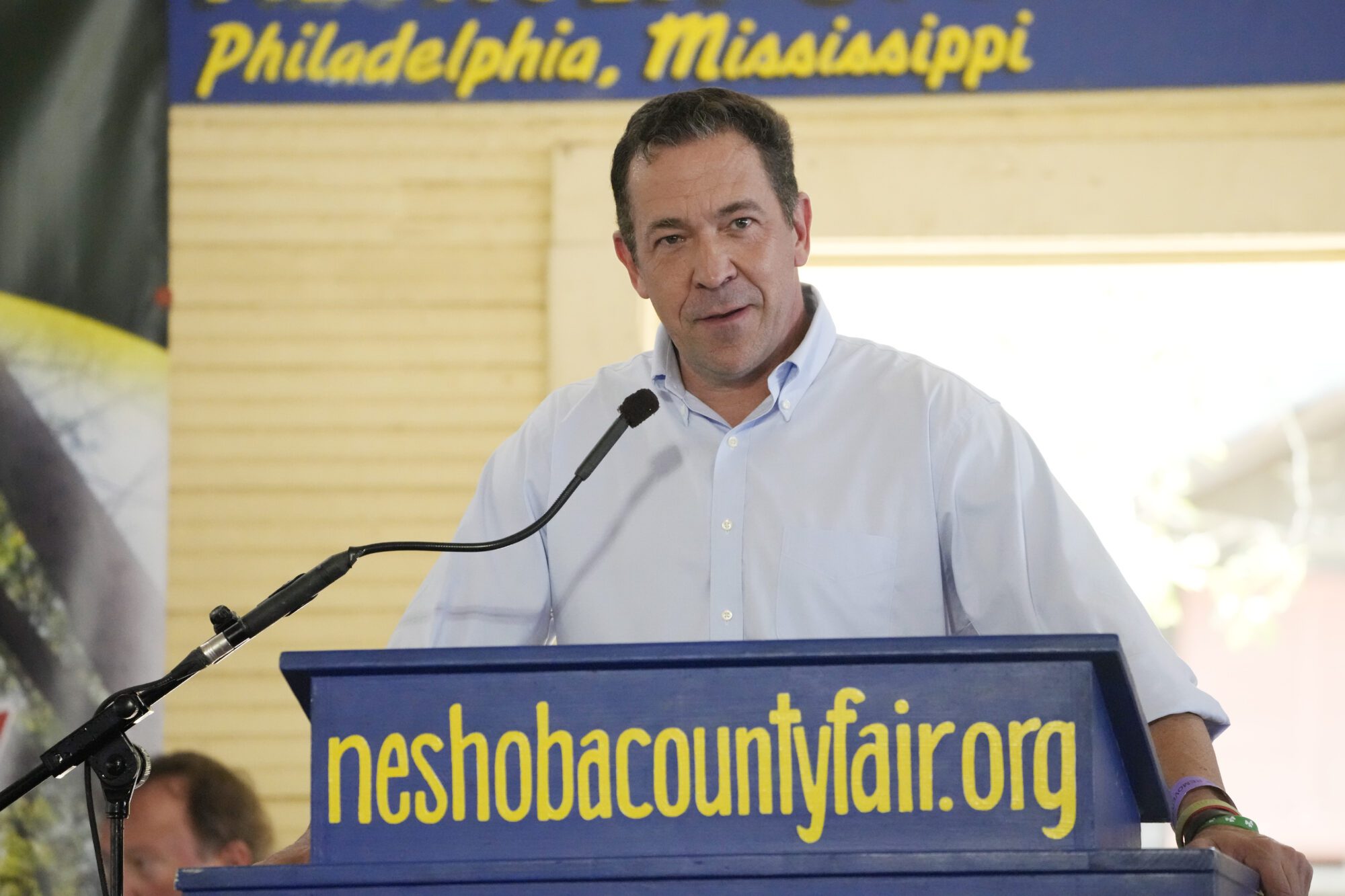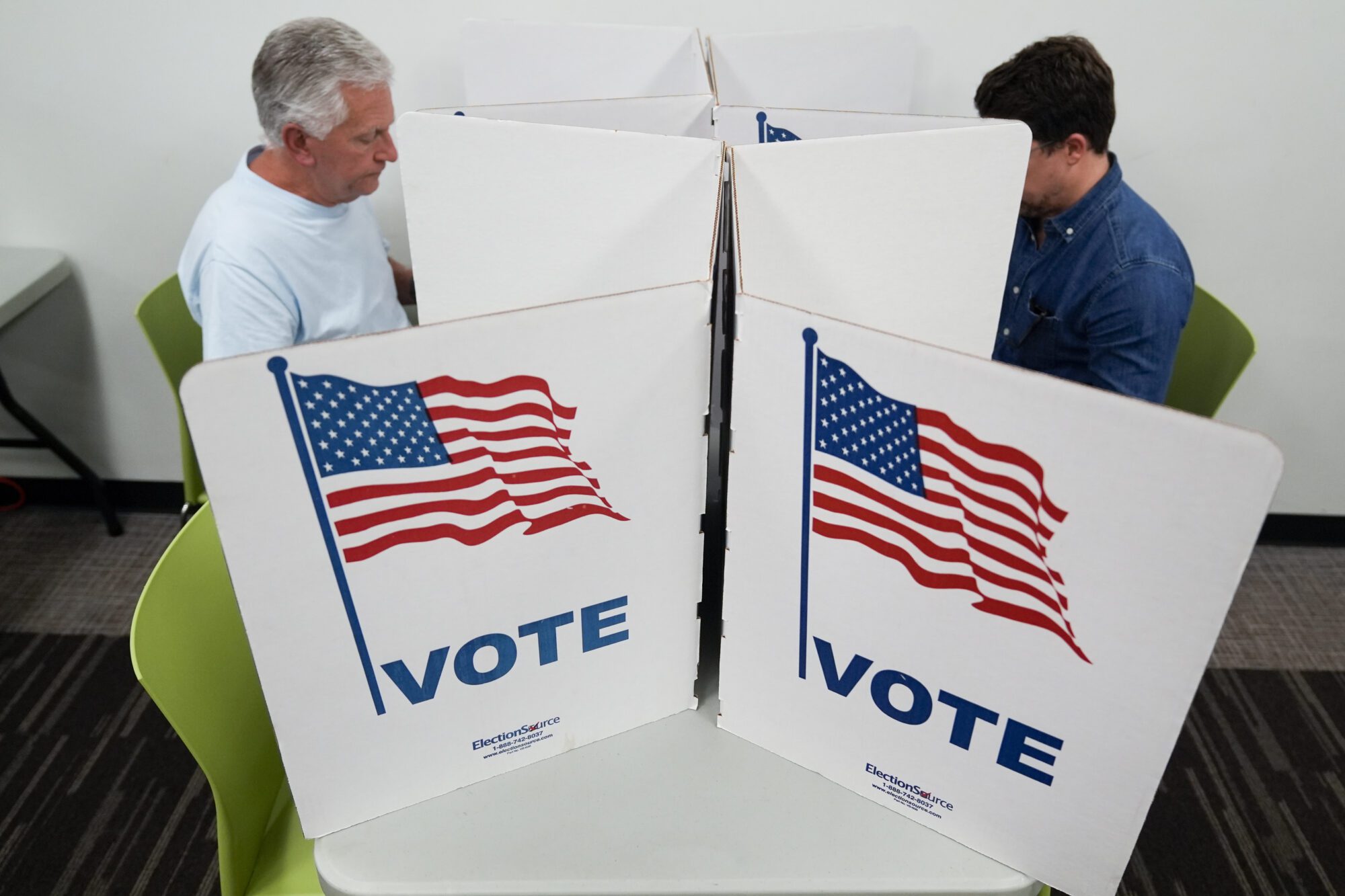
Supreme Court nomination protest, Washington, D.C. (Library of Congress, 2020)
- Jameson Taylor writes that the judicial branch is the only branch whose duty is to safeguard the sacred rights of the people from the dangerous ambiguity that occurs when abstract lawmaking meets concrete enforcement.
This summer the U.S. Supreme Court struck down a cornerstone of what has come to be known as the “Deep State,” insofar as the term refers to an entrenched army of bureaucrats with little accountability and an extraordinary possession of power over people’s lives. The decision in Loper Bright Enterprises v. Raimondo reverses a 1984 Supreme Court case called Chevron, the origin of a legal doctrine called “Chevron deference.” By now, many readers will have heard of Loper Bright and/or Chevron and comprehend that Loper Bright will help restrain administrative power. A great deal of work remains, however: for the courts, the states, and Congress.
The problem with Chevron, and related precedents, is that they undermine the rule of law by upsetting the balance of separated powers essential to our constitutional government. It is often proclaimed that we are a “government of laws, not of men.” But what does this mean? The Massachusetts Constitution of 1780, drafted by John Adams, explains:
- In the government of this commonwealth, the legislative department shall never exercise the executive and judicial powers, or either of them: the executive shall never exercise the legislative and judicial powers, or either of them: the judicial shall never exercise the legislative and executive powers, or either of them: to the end it may be a government of laws and not of men.
“Never” is a powerful, uncompromising standard. Why does Adams issue such a stern warning? It is because everything depends upon the separation of powers. Under the U.S. Constitution, the rule of law is preserved by the separation of powers among the three branches of government. The legislative branch is the only branch with the authority to craft and enact laws. The executive branch is the only branch endowed with the power to enforce these laws. And the judicial branch is the only branch whose duty is to safeguard the sacred rights of the people from the dangerous ambiguity that occurs when abstract lawmaking meets concrete enforcement.
If Adams is right, America is in a state of “constitutional crisis.” To put it politely, this is a time of expansive and unprecedented executive power. This aggrandized power is largely unnoticed because it is dispersed. If this power were consigned to one person – a president, for example – it would raise the alarm. Instead, the power remains concealed and unaccountable because it is delegated to federal agencies. All the while, Congress does little more than vote to fund the effort.
Congress’ abdication has been bad enough. But a three-legged stool may be serviceable if one leg is missing. A one-legged stool is no longer a stool. A government in which the legislative branch and the judicial branch are habitually prostrating themselves before the executive branch will not be a “government of laws.”
Generally, under the Constitution and, specifically, under the Administrative Procedures Act, it is the duty of the courts to “authoritatively resolve ambiguities in statutes and regulations.” Instead of doing so, the Supreme Court invented two legal theories that empowered agencies themselves to adjudicate such matters. The first of these is Chevron deference, which applies to an agency’s interpretation of laws enacted by Congress. The second is Auer deference, which applies to an agency’s interpretation of its own regulations.
Chevron deference
Until Loper Bright, Chevron deference required federal courts to defer to virtually any agency interpretation of a statutory provision unless it seemed “arbitrary, capricious, or manifestly contrary to the statute.” In cases, like California Sea Urchin v. Combs (2018), this entailed validating an agency’s willful and obvious commitment to ignore the intent of the law because the statutory text did not explicitly prohibit an enforcement action. Until the 2000 Christensen case, Chevron was generally applied “to fill any gap left, implicitly or explicitly, by Congress,” including “authoritative agency positions set forth in a variety of other formats.”
Auer deference
The 1997 case, Auer v. Robbins, held that when the language of a regulation is ambiguous, an agency’s interpretation of its own regulation is entitled to deference by federal courts, unless the interpretation is “plainly erroneous or inconsistent.” The Auer opinion invited aggressive administrative action, stating: “A rule requiring the Secretary to construe his own regulations narrowly would make little sense, since he is free to write the regulations as broadly as he wishes, subject only to the limits imposed by the statute.” And these limitations, said the Court, have not been provided by Congress, such that “we must sustain the … approach so long as it is ‘based on a permissible construction of the statute.’” In short, Auer is an incentive to mischief because it permits agencies to draft ambiguous regulations and interpret them as desired.
In spite of Loper Bright, Auer deference is still with us (but see Justice Elena Kagan’s spirited dissent). As the Court explained in the 2019 Kisor decision: “Issues surrounding judicial deference to agency interpretations of their own regulations are distinct from those raised in connection with judicial deference to agency interpretations of statutes enacted by Congress.” Auer deference applies in the first instance; Chevron in the second. With Chevron gone, expect activist courts to lean heavily on Auer to justify agency mission creep.
Auer deference, however, is just as unconstitutional and corrosive as Chevron deference, as affirmed by Justice Clarence Thomas’ 2015 concurrence in Perez v. Mortgage Bankers Association. “Because this doctrine effects a transfer of the judicial power to an executive agency, it raises constitutional concerns,” Thomas observed. “This line of precedents undermines our obligation to provide a judicial check on the other branches, and it subjects regulated parties to precisely the abuses that the Framers sought to prevent.”
While some judges (again, see Kagan’s Loper Bright dissent) fret that overturning Auer would “‘cast doubt on’ many longstanding constructions of rules,” the Court has already nodded toward a solution: “Skidmore respect.” As articulated in Christensen vs. Harris County (2000), the Skidmore doctrine cabined Chevron deference by clarifying that Chevron only applied to “a formal adjudication or notice-and-comment rulemaking.” Other forms of guidance or administrative interpretation, it was decided, did not merit deference, but only “respect,” to the extent such interpretations have “the power to persuade.” Examples of such guidance are opinion letters based on “policy statements, agency manuals, and enforcement guidelines, all of which lack the force of law.”
Deference is synonymous with “acquiescence,” “obeisance” and “submission.” Respect connotes “esteem,” “friendship” even, suggesting a kind of equality. Thus observes Chief Justice John Roberts in Kisor v. Wilkie: “There is a difference between holding that a court ought to be persuaded by an agency’s interpretation and holding that it should defer to that interpretation under certain conditions.” A doctrine of “Skidmore respect” applied to agency interpretations that ARE endowed with the force of law would move us closer to the separation of powers necessary to the rule of law.
The judicial branch should “respect” the activities of the executive branch. It must not submit to them, thereby abandoning its constitutional obligations. Congress should “respect” executive enforcement actions, without empowering the administrative state by passing legislation so unrestrained that it encourages aggressive regulatory schemes. The States should “respect” executive efforts, but decline to help enforce unconstitutional and morally questionable statutes and regulations. This is what the “separation of powers” doctrine requires in practice. In the next part of this series, I will identify specific steps state lawmakers can take, post-Chevron.
#####











